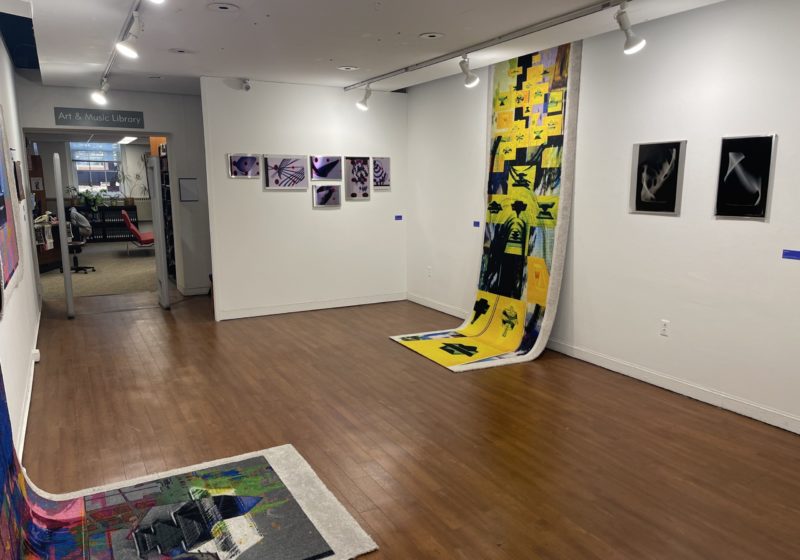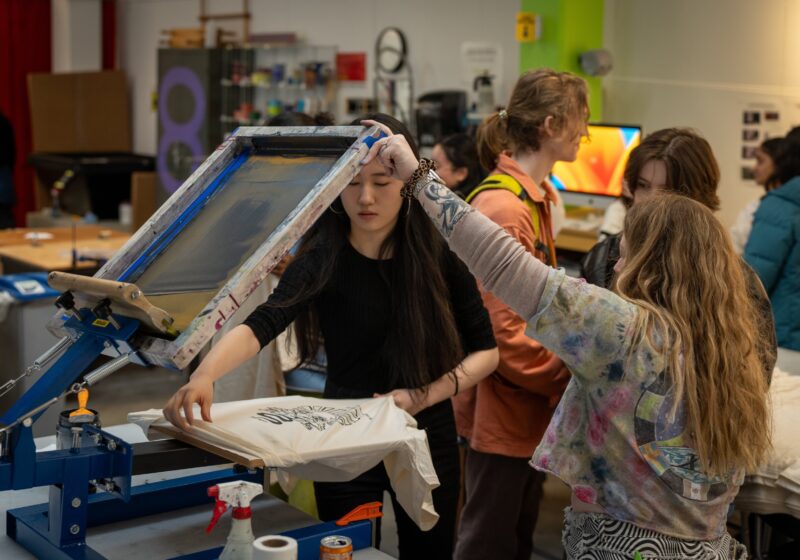Frontispace’s new exhibit is haunted by a sense of humanity that is hardly present.
This is partially a result of the thrust of the collection — titled “Synthetics” by Gali Greenspan — which features works made using old, analog technologies and presented on mediums at the outer bounds of what may constitute “human production,” like mass-produced consumer carpeting and tightly-machined aluminum flashing.
All throughout, there is a tension between the imprecision — almost humanlike — of the analog production methods used and the extremely digital and inhuman geometries that pepper the final results. This is why I call the exhibit haunted. As I walk through it, my brain desperately gasps for breaths of anything human, latching onto false patterns of its own creation and taking stupid comfort in familiar colors and discrete, definable geometries.
For instance, two carpets — mass-produced, as their descriptions are careful to note — hang from the ceiling and unfurl onto the floor. They’re splattered, each fiber like a pixel, with chaotic, computeresque geometries assembled from “processed frames of analog moving-image footage.”
When I look at them, I notice my stupid human brain being too stupid and too human to take the geometries at their face value. I stare at the yellow and black shapes that pepper the carpet on the right and I can’t help but see repetitions of the Wu-Tang Clan logo superimposed over a photo of an abstractly painted hallway descending to a black vanishing point. This is because I am dumb. The flesh computer in my head needs patterns to look at. I wish I could see this art for what it is.
The same happens when I look at the smaller artworks. 10 of the pieces are dye-sublimation prints on aluminum flashing featuring more senseless geometries generated using an analog wobbulator. But my brain looks at the purple-ish prints like they’re microscope slides exhibiting little alien microbes taken from a bit of lake water, and it processes the black-and-white ones as unfamiliar bone x-rays.
It is like my brain wants to reflexively protect me from the post-human elements of the artwork. It is like my brain does not want to accept images of a world not made for it to process.






